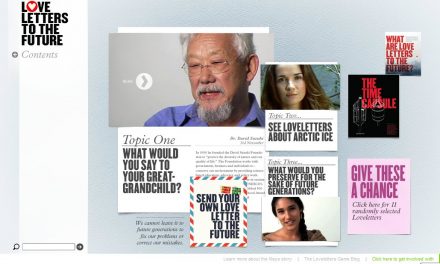This time we talked to Robert Pratten, whom a lot of people know as Transmedia Storyteller or for his company Zenfilms, which he founded after a successful career in marketing. Last year he wrote one of the first books on “Getting Started in Transmedia Storytelling”, (Kindle or free version ) which I can highly recommend.
UPDATE:
[lightbox full=”https://tmsb.de/wp-content/uploads/2012/02/Mask-of-Red-Death-Teaser-Poster-220×150.jpg” title=”Teaser Poster”] [/lightbox]Robert confirmed a new film-project for 2013: Based on E.A.Poe he will be directing “The Mask of the Red Death” – we’re looking forward to it! You can support on Facebook already and we are all curious on the transmedia side of the movie!!!
[/lightbox]Robert confirmed a new film-project for 2013: Based on E.A.Poe he will be directing “The Mask of the Red Death” – we’re looking forward to it! You can support on Facebook already and we are all curious on the transmedia side of the movie!!!
As a filmmaker why transmedia?
I’ve found that watching an audience interact with my stories is addictive. It’s a combination of voyeurism and learning through iteration that is powerfully enthralling – to see how someone makes their way through a story and to understand why and make changes to see what can be improved. Not only is the audience engaged by participating in the world but so is the transmedia storyteller in watching them.
Filmmaking doesn’t give this kind of thrill as often as I’d like. It’s great being on set directing and it’s great being in a theatre when the film is screened. But those experiences don’t come as often enough as it does with transmedia storytelling.
What’s driving the sudden activity and buzz around “transmedia” in your opinion?
Everyone has been impacted by the Internet and what it’s enabled: the explosion of content, the easy and often free distribution of content, the rise of social media. The old ways of doing things don’t work like they did before – there’s more competition for consumers and a stronger need for retention; to see the consumer in terms of their life-time-value rather than the sale of a one-off item.
Many people are now experimenting with multi-platform storytelling as a way to reach and engage audiences and to find new ways to get paid for what they do.
The early adopters of transmedia have tended to be tech-savvy and quite arty creative people and that’s why there tends to be a kind of techno-fetish – a heavy influence of interactive web media, mobile apps – and high barrier to entry for the audience by which I mean the audience is being asked to do a lot – to solve this, to collect that, to run to here, to scan this.
What we’re seeing now is the adoption by agencies, who are working for brands, which of course want much simpler, easier to explain, easier to adopt experiences. It’s this social media marketing-motivated work that will spread the acceptance and adoption to a wider public.
Can you think of any examples of content, either mainstream or niche, that are great case studies for how things should play out?
No, not really. There are lots of examples that we’re all familiar with and they’re all great in their own way but nothing yet that can be said to be a defining example because the goals of those works have been so varied.
Much of the success of projects is measured in terms of exposure – number of players or number of views and so on. But this exposure has often been the result of coverage in traditional press or paid placements: it’s been the quirkiness or uniqueness of the experience that has attracted attention – and there’s nothing wrong with that, it’s totally legitimate – but it’s not necessarily been the inherent, organic spreadability or stickiness of the experience. So in terms of giving the client what they want – many projects are a big success – but in terms of benchmarks for designing new experiences the field is still wide open.
Do you think that only Hollywood and big networks are able to realise “cool” transmedia projects? What does it need to accomplish great projects? What tips do you have for people starting with transmedia?
Absolutely not! I think that any indie can create amazing work. The problem is that too many indies try to copy these bigger budget examples rather than play to their own strengths and budgets. Too many are defining transmedia as some complex, technology-laded extravaganza when they ought to start incredibly small and then build out from there.
Our Lowlifes.tv project cost us $500, it was paid back in about two months after launch and continues to provide a tiny income each month from sales of Kindle books. Anyone could replicate that and learn more from doing than almost anything they’d learn from courses and reading blogs. Yet too many people are copying the old ways and waiting for more money or crew and so on. They keep giving themselves excuses not to do something. Learning to, say, program in C++ is a distraction – it’s an excuse not to come up with a creative idea – just like buying a new pen instead of writing!
Our Conducttr platform was created to allow creative people to tell cross-platform stories without the need for coding. The only new skills indies need to learn is now to tell stories across social media, email & text messaging in such a way that it pulls the audience deeper into the storyworld. The biggest challenge is honing the craft of audience participation and storytelling – finding ways to allow others take part in the storyworld because this is the key to conversation, spreadability and stickiness.
What do you wish for upcoming transmedia projects?
It’d like to see a better integration of storytelling and participation. At the heart of the story is a premise and it’s this “truth” that the experience should explore; this is the way to put the audience at the heart of the story.
Too often I see Facebook pages or Twitter accounts for characters that don’t really add anything – they’re just pages for the sake of pages.
What is the transmedia scene in the UK like?
In the UK, transmedia is doing very well but I think the British being British are often reluctant to call what we’re doing transmedia! As a nation we have a healthy skepticism for fads and buzz words but this too often becomes cynicism which is very destructive – not only for the nation but for the individual too. I’ve been working outside the UK for the past four years while I’ve been in San Francisco and I’m writing this just as I’ve returned to London. Watch this space 🙂
Thank you very much for your insights and your inspiration Robert!
© aller Logos und Abbildungen bei den Rechteinhabern.
(All pictures, trademarks and logos are protected.)







Recent Comments